Lisbon, Portugal is a beautiful and vibrant city with so much to see and do! Here is a guide to help you make the most of your visit. Be sure to add these top attractions to your itinerary!
If you’re heading to Portugal for the first time, then more likely than not you’ll be flying into its capital city of Lisbon. It’s a colorful city and every corner looks photogenic, begging to be photographed. To check out all its top attractions, I would highly recommend spending 3 full days in Lisbon if your schedule allows it.
The best time of year to visit Lisbon is springtime, when the weather is mild and the streets are filled with colorful flowers. However, both times that we’ve visited Lisbon were during December and it wast just as lovely to enjoy the Christmas decorations.
There is so much to do and see in this vibrant city, but here is my list of top attractions that you can’t miss!
Torre de Belém

Torre de Belém (Belém Tower) was built between 1514 and 1520 during the height of the Portuguese Renaissance to defend Lisbon, but was transformed into a lighthouse and customs house years later. I highly recommend you come here around sunset to capture the beautiful light behind the tower. If you’re lucky, there’ll be live music as well since many people gather by the water to admire the beauty of the tower around this time. This is probably one of the most iconic attraction in Lisbon. If you want a tour inside then be sure to arrive before the doors close at 5:30pm (October-April) or 6:30pm (May-September). Tickets cost €6 per adult to enter.
Jerónimos Monastery

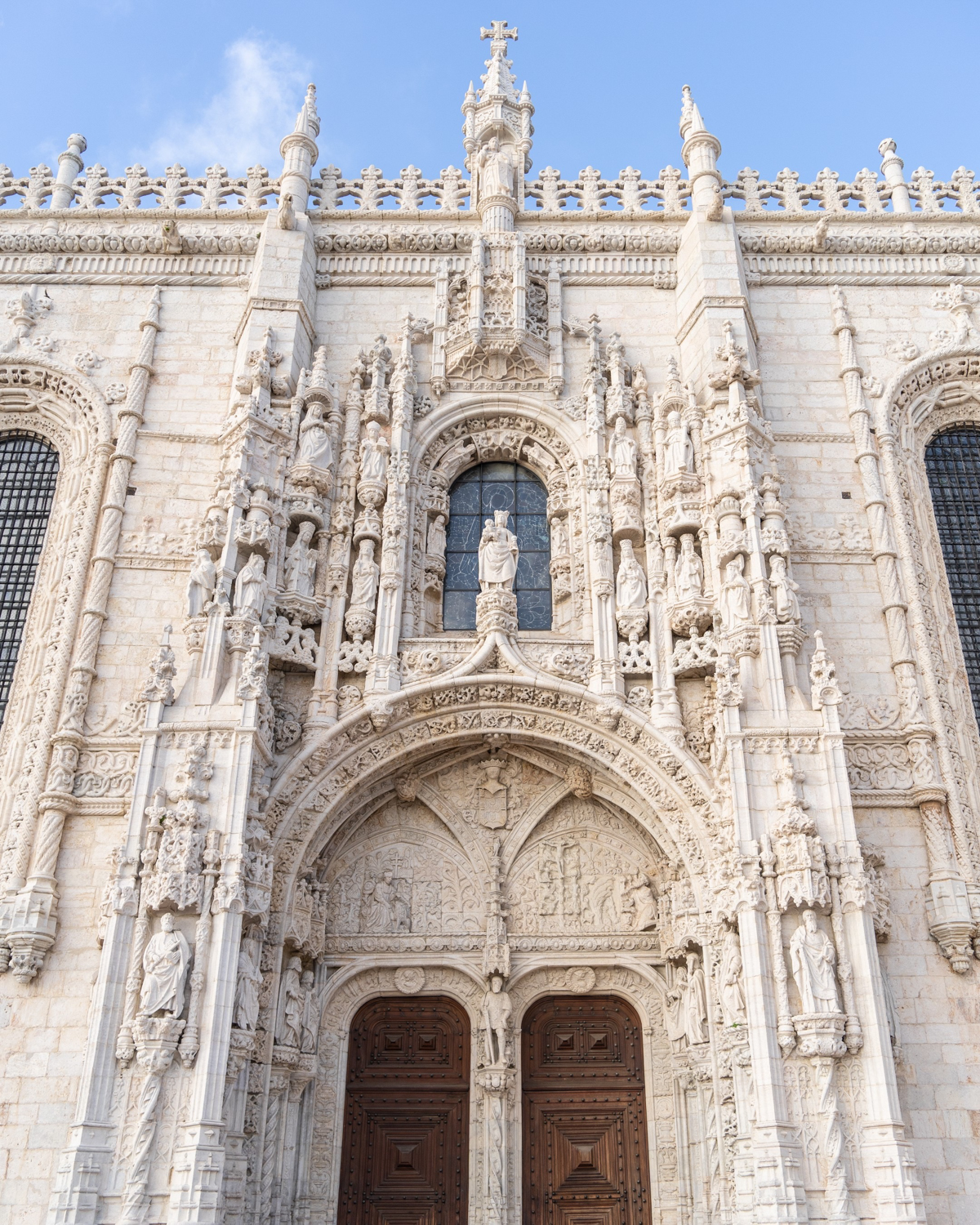
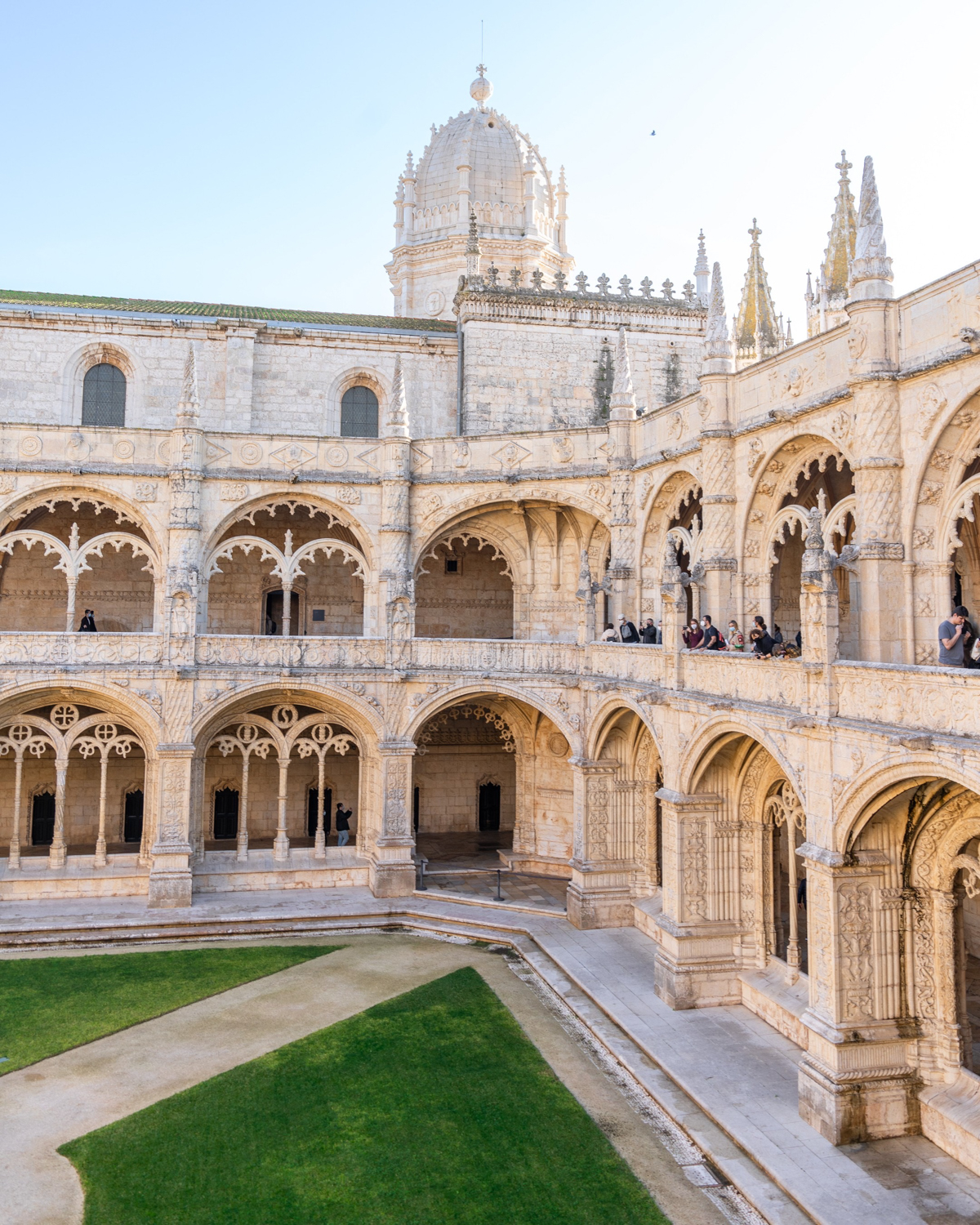
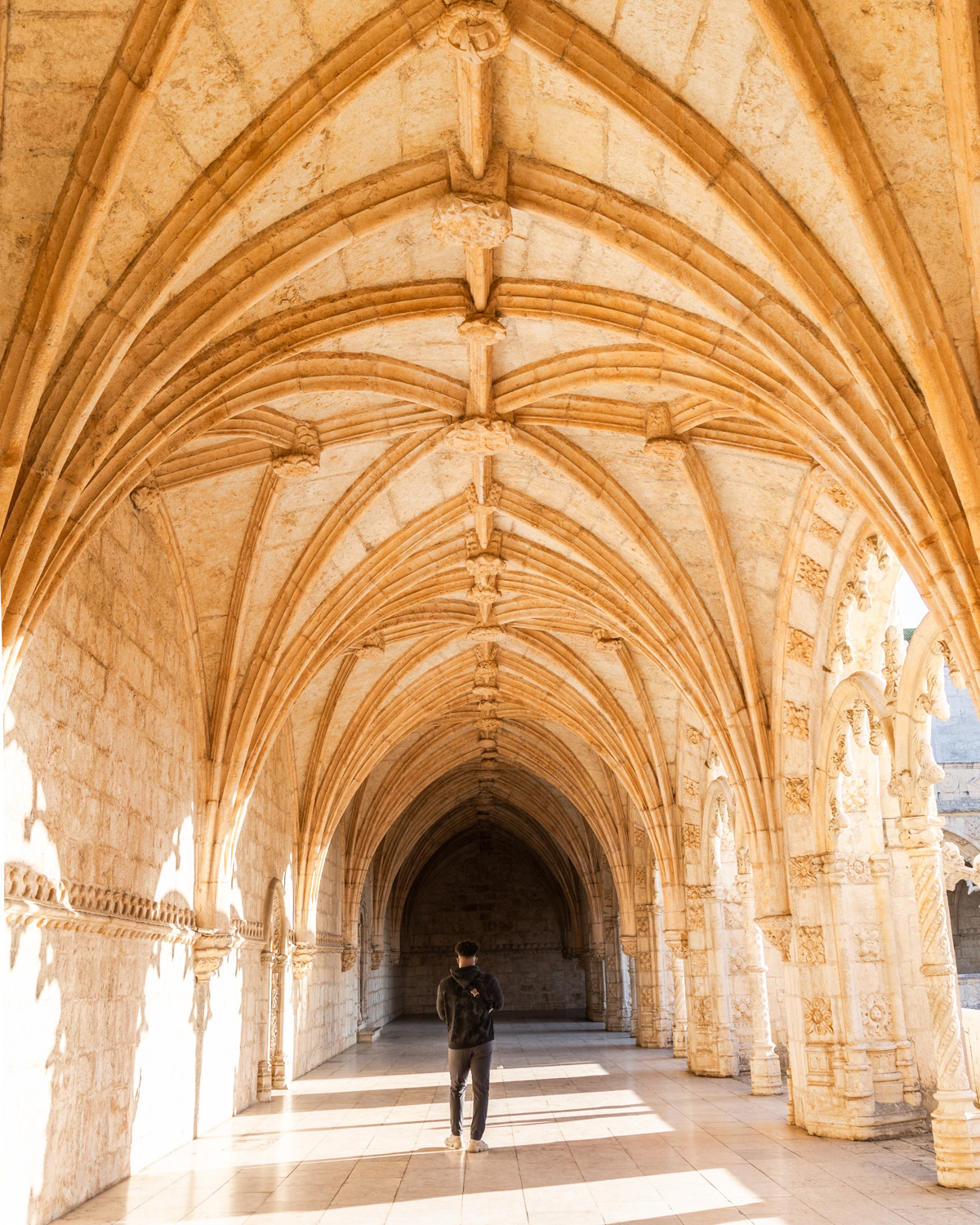
The Jerónimos Monastery was constructed in 1501 and declared a UNESCO World Heritage Site in 1983. King Manuel wanted it built so that the monks could pray for his eternal soul and provide spiritual guidance and protection to the sailors who departed from the nearby port. Many architects contributed to the design over the centuries, and it’s pretty amazing how all the intricate details are still kept in pristine condition. Depending on the season, it’s open from 10am – 5:30pm or 6:30pm. It’s free to enter the church but to check out the cloister, it’s €10 for adults and free for children under 12 years old.
Miradouro das Portas do Sol

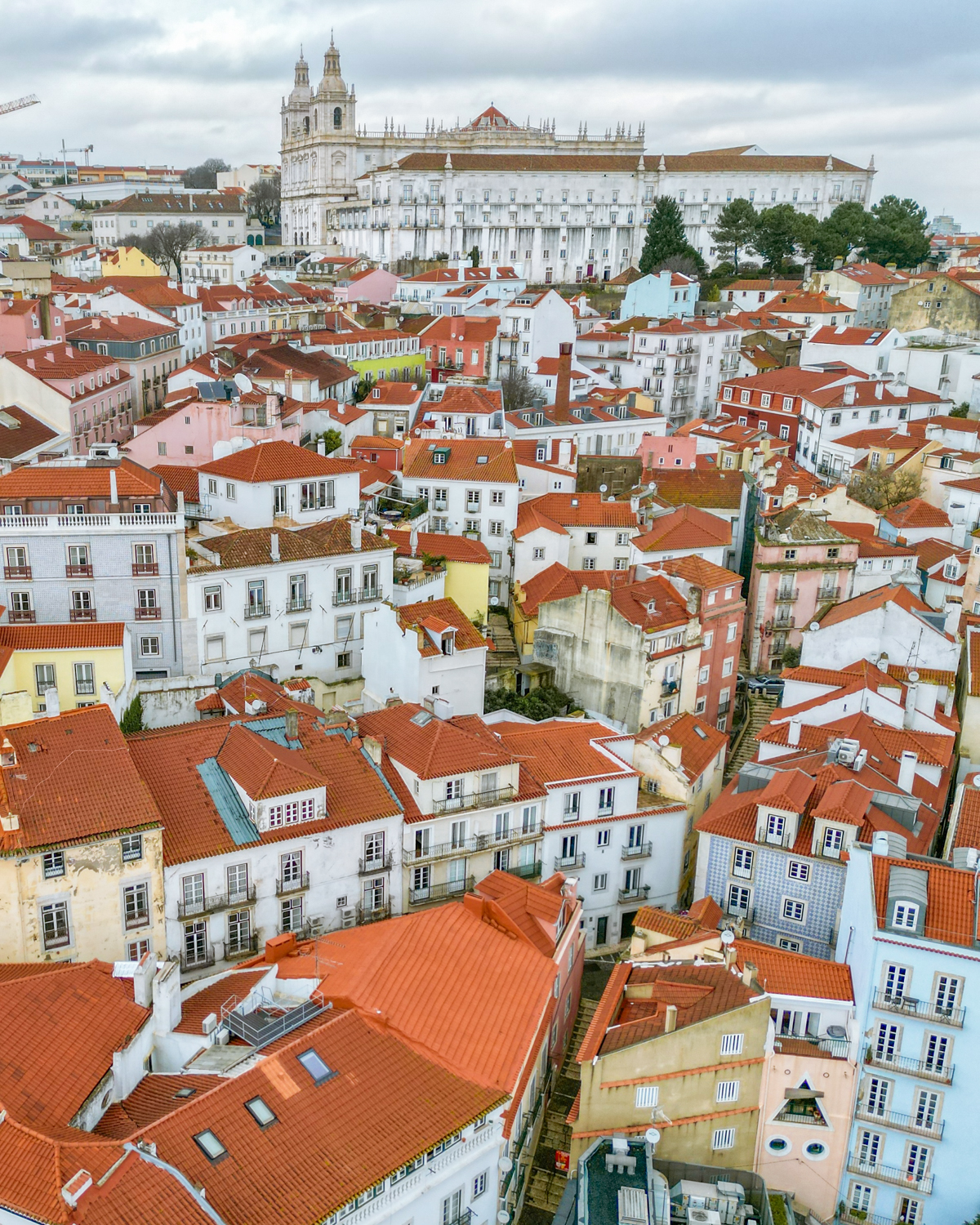
Once a fishing community, Alfama is the oldest neighborhood in Europe. You can spend a few hours here exploring its many alleyways, but be sure to wear comfortable shoes since there are endless hills! The number one attraction in this neighborhood is the Portas do Sol viewpoint. You can truly admire the architectures of the entire neighborhood from this vantage point. To leisurely spend your time here and take in the postcard-worthy view, make a reservation at the restaurant also called Portas Do Sol.
Santuario Nacional de Cristo Rei
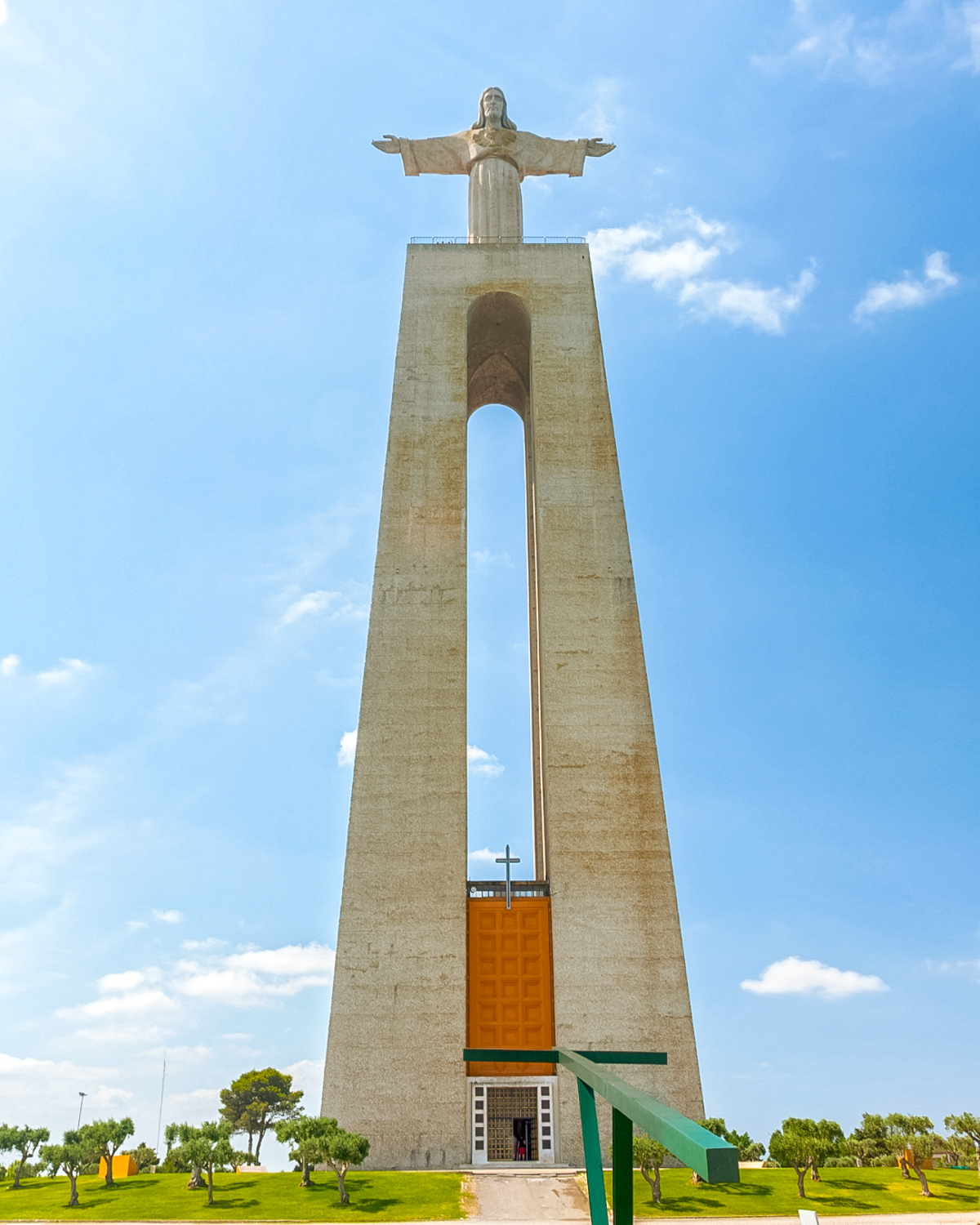

If you haven’t had a chance to see Christ the Redeemer in Brazil then the next best thing would be the National Sanctuary of Cristo Rei. One of the tallest buildings in Portugal, the monument features a 28-meter-high statue of Jesus Christ at the top. With his open arms facing Lisbon, this spot offers a great panoramic viewpoint.
It’s also perfect for taking pictures of the iconic Ponte 25 de Abril, a bridge that looks just like the Golden Gate Bridge! The monument is open every day from 10am – 7pm. It’s free to enter the chapel at the base, but to get to the viewing platform, it’s €6 for adults and €3 for children. Free for kids under 8 years old.
Padrão dos Descobrimentos
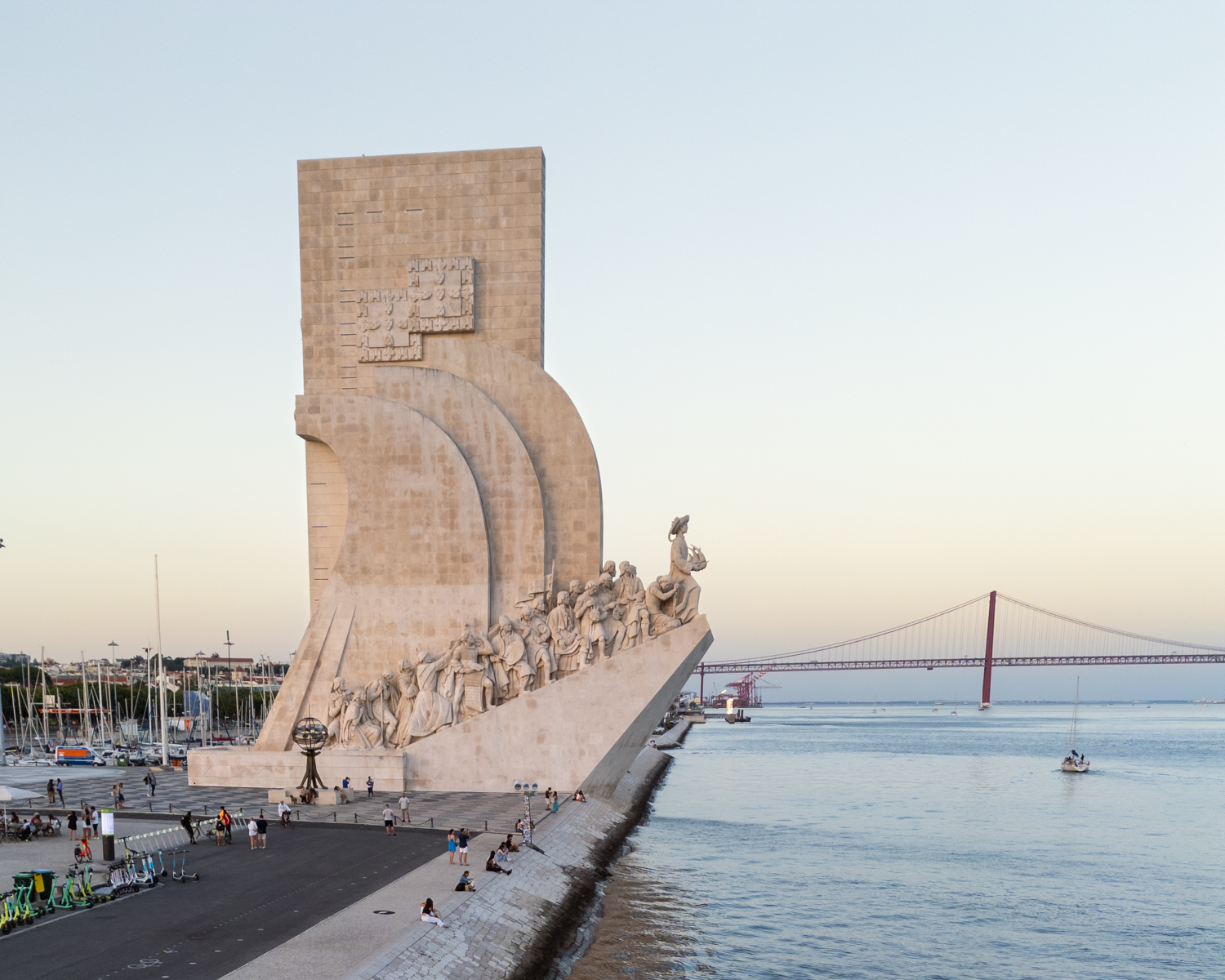
Padrão dos Descobrimentos (Monument to the Discoveries) was inaugurated in 1960 to commemorate the 500th death anniversary of Henry the Navigator. The 52-meter-high monolith honors Henry and other great explorers who expanded the country’s influence during Portugal’s Age of Discovery in the 15th and 16th centuries. During this period of extensive exploration and maritime expansion, Portuguese sailors and navigators traveled to unknown lands, established trade routes, and made significant geographical discoveries. This era brought immense wealth and cultural exchange to Portugal, shaping the country’s identity and global influence.
The monument, resembling the prow of a ship and shaped like a caravel, features 33 statues of navigators, monarchs, cartographers, missionaries, and other figures associated with the explorations. A statue of Henry the Navigator stands at the forefront of the monument. It’s the perfect spot to enjoy the waterfront and watch people sail by.
Castelo de São Jorge
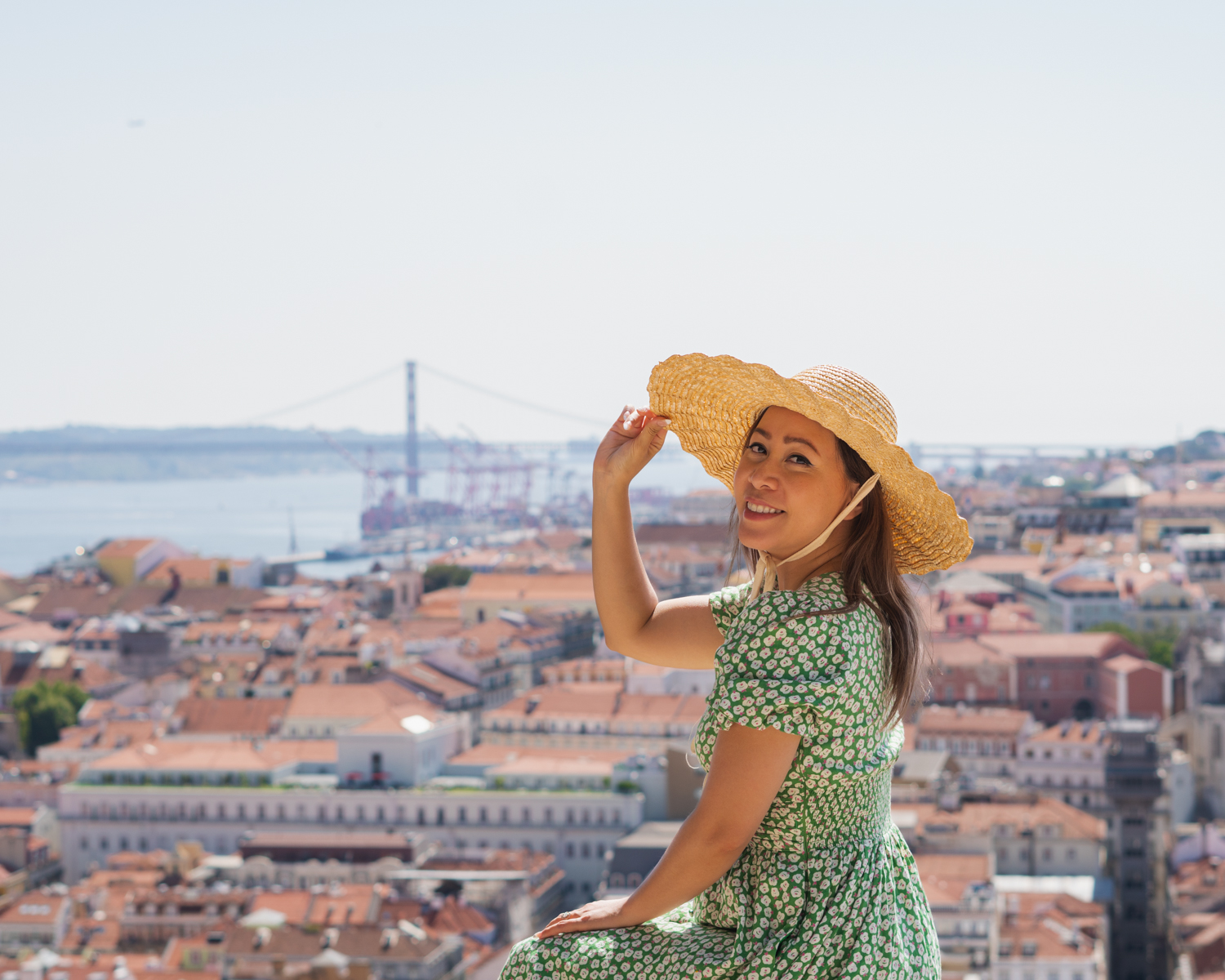
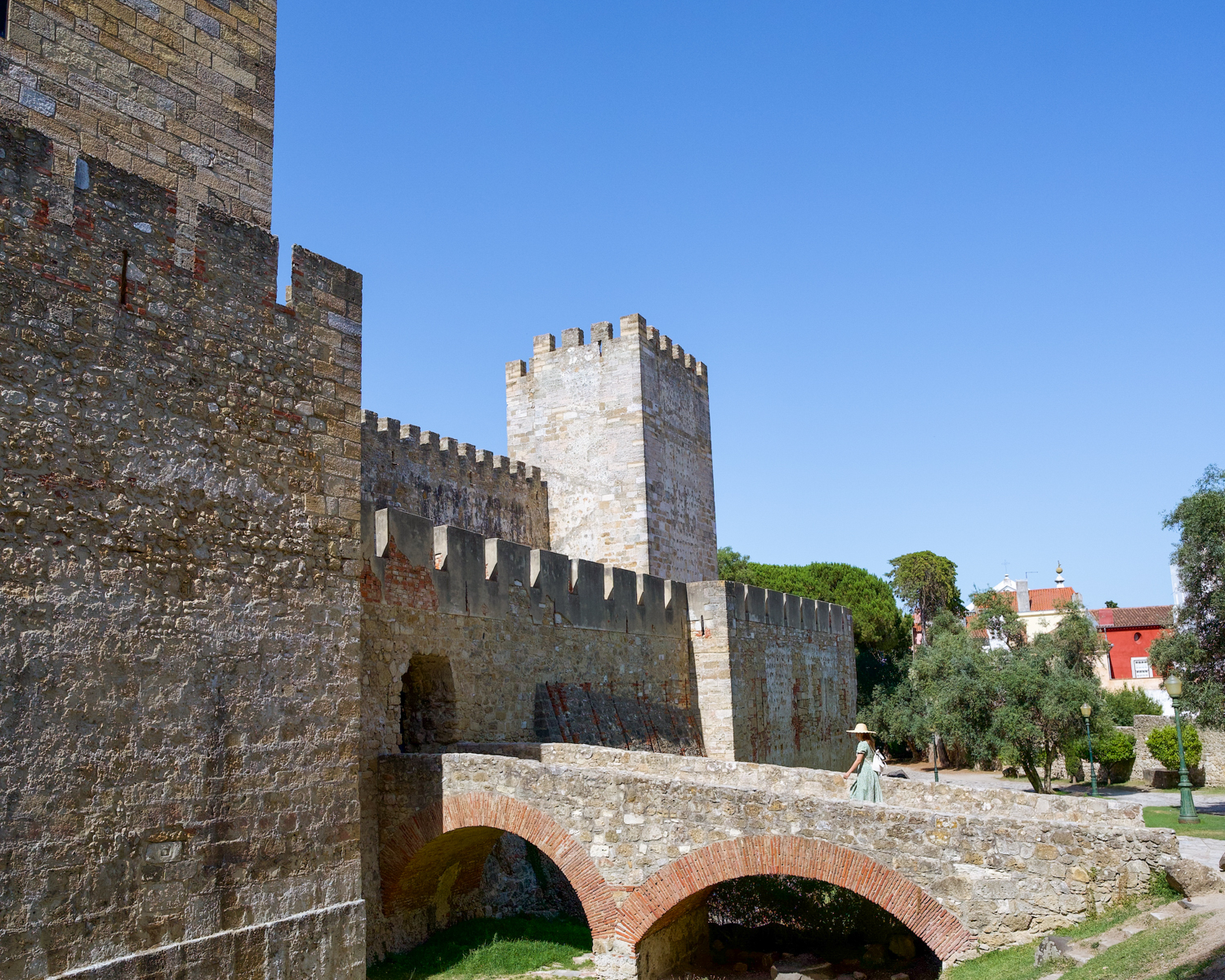
This historic castle, located in the center of Lisbon on the highest hill, offers impressive panoramic views of the city from its terrace. Various civilizations, including the Phoenicians, Romans, and Moors, are believed to have settled on the hill where the castle stands. Established during the Moorish rule in the 11th century as a fortified citadel, the castle’s strategic hilltop location made it easy to observe the surrounding lands and the Tagus River.
Since the 12th century, the castle has served as a royal palace, a military barracks, and now a national monument and museum. Its historical, architectural, and cultural significance make it an essential destination for anyone seeking to understand Lisbon’s past and appreciate its present. From March to October, it’s open from 9am – 9pm. From November to February, it’s only open from 9am – 6pm. It’s €10 for adults and free for children under 12 years old.
Miradouro de Santa Luzia

From this vantage point, visitors can see the meandering streets of Alfama, the Tagus River, the Sé Cathedral, and the São Jorge Castle. Named after the nearby Igreja de Santa Luzia (Church of Santa Luzia), which dates back to the 12th century. The viewpoint is renowned for its beautifully crafted azulejos (traditional Portuguese ceramic tiles) that adorn the surrounding walls. These tiles depict historical scenes, maritime images, and glimpses of daily life, showcasing Portugal’s rich cultural heritage and seafaring history. With its landscaped terrace, bougainvillea-covered pergola, and azulejo-tiled pavement, Miradouro de Santa Luzia is considered one of the most famous lookout points in Lisbon.
Miradouro da Senhora do Monte

I witnessed a proposal at this famous viewpoint during my last visit, which shows how impressive the views are atop Lisbon’s highest hill, Santo André. Once a secret spot for young lovers, it is now a popular destination for tourists looking to capture the most epic sunset. Named after the nearby chapel, the Capela de Nossa Senhora do Monte (Chapel of Our Lady of the Mount), this viewpoint offers stunning scenery.
Praça do Comércio
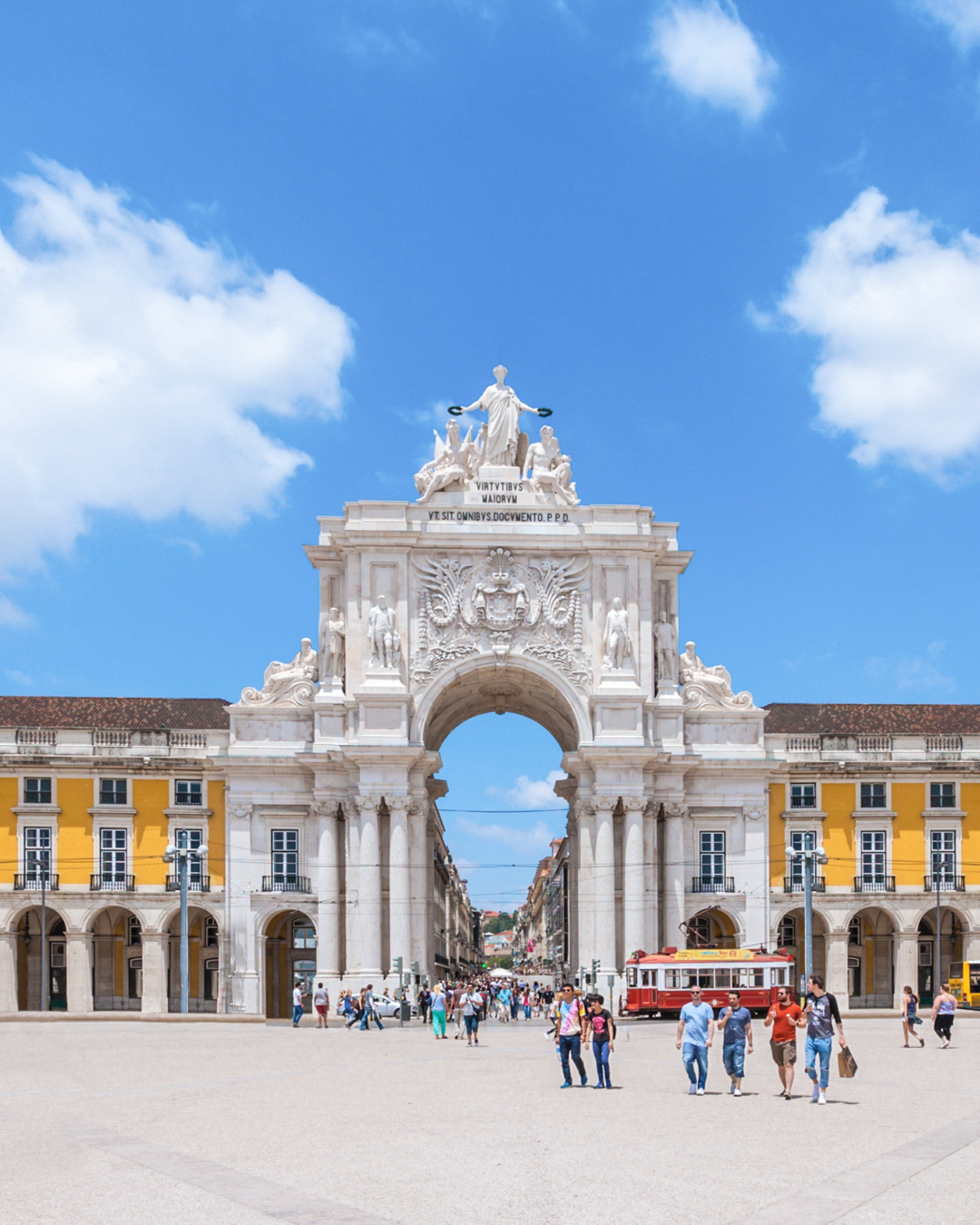
This magnificent harbor-facing plaza, one of the most historically significant and iconic squares in Lisbon, is also one of the largest in Portugal. It used to be the main entrance to the city, as ships would arrive at the nearby port and traders and visitors would enter the city through this grand square. Praça do Comércio has witnessed important events throughout Lisbon’s history as it was once the site of the Royal Palace and government buildings. Now it’s a bustling area with cafes, shops, and cultural events.
The square is surrounded by a colonnade of 34 arches and the center features a statue of King Joseph I, the monarch who ruled during the 18th century. The Arco da Rua Augusta, a triumphal arch commemorating the rebuilding of Lisbon after the 1755 earthquake, also stands here. It’s a great place to relax, enjoy views of the Tagus River, and explore restaurants and shops.
Time Out Market
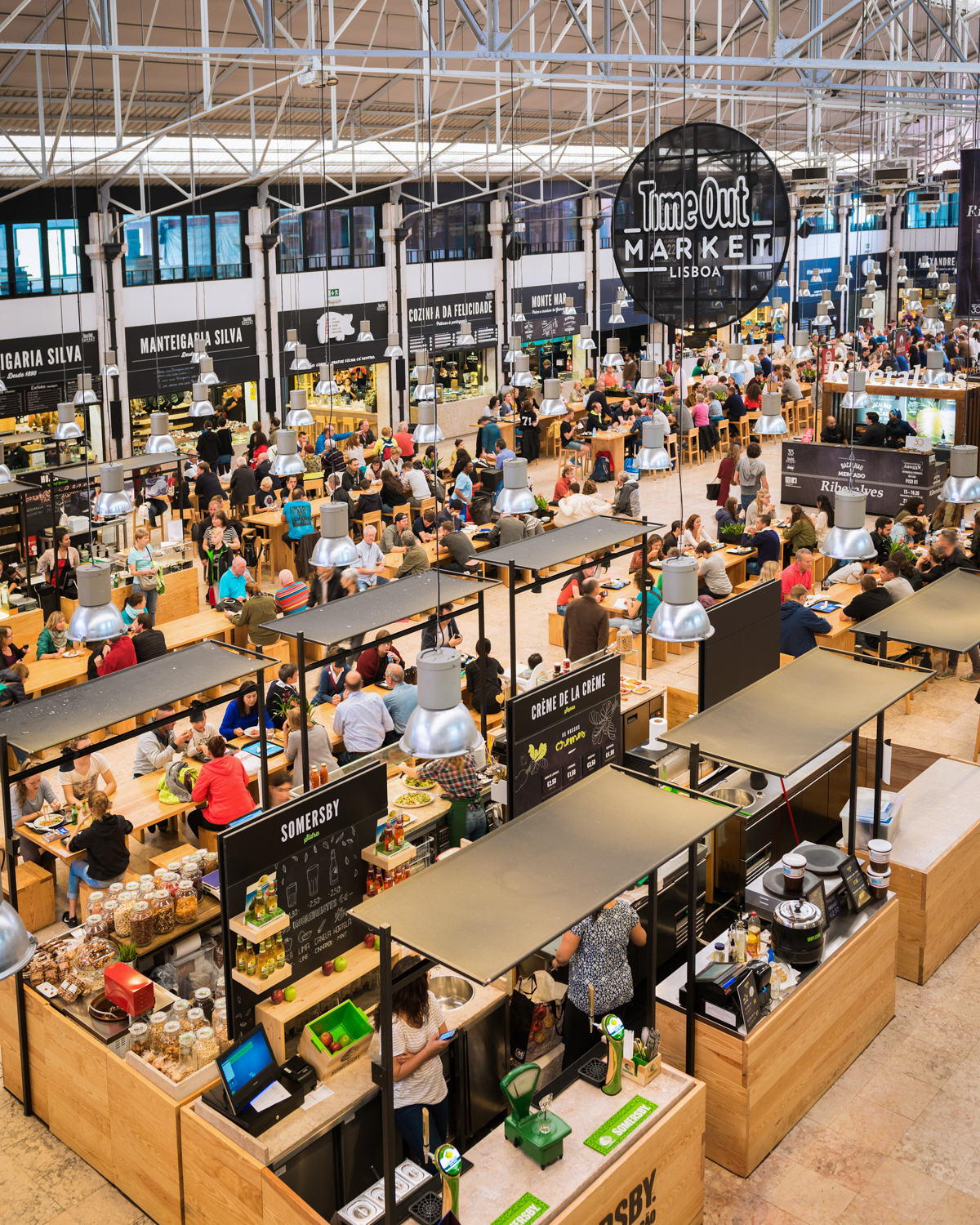
Time Out Market grew from the concept of Time Out magazine, known for recommending restaurants, events, and entertainment in various cities around the world. This famous food hall showcases a carefully curated selection of some of Lisbon’s top restaurants, chefs, and food vendors. These vendors serve a wide range of culinary delights, including traditional Portuguese dishes, international cuisines, gourmet creations, and street food favorites.
You’ll find a fantastic opportunity to sample a variety of flavors and dishes in one location. From seafood to pastries, gourmet burgers to fine dining options, the market offers something to satisfy every palate. If you want to try one of the tastiest pastéis de nata, Portuguese custard tarts, definitely check out the Manteigaria stand! The market gets really crowded since both locals and tourists love grabbing a bite here, so try to avoid peak meal times. The market is open seven days a week from 10am – 12am and admission is free.
Convento do Carmo
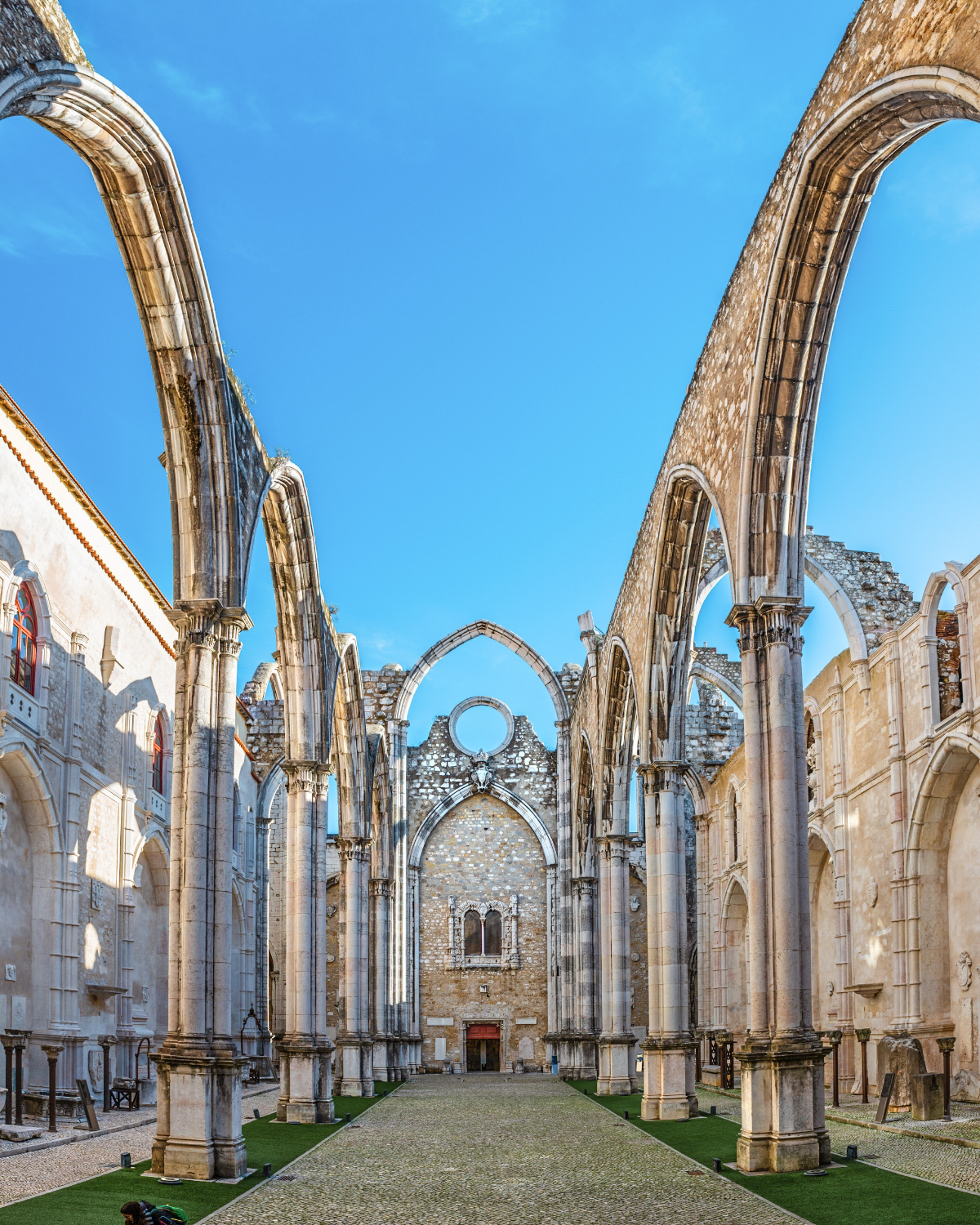
The Convento do Carmo (Carmo Convent) ruins are all that remain of a 14th-century convent that was destroyed by the 1755 Lisbon earthquake. The earthquake ranks as one of the deadliest in history and caused widespread damage to Lisbon. The convent was one of the most heavily damaged buildings, and it was never rebuilt. The roofless nave and the collapsed pillars starkly contrast with the surrounding modern buildings.
The ruins now house the Museu Arqueológico do Carmo, an archaeological museum featuring a collection of artifacts from Roman, Visigothic, and Moorish Portugal. The museum is open to the public and is a popular destination for history buffs and tourists alike. It opens from 10am-7pm from Monday – Saturday, and closes on Sunday. Tickets cost €5 for adults, €4 for students and seniors, and free for children.
Praça Dom Pedro IV
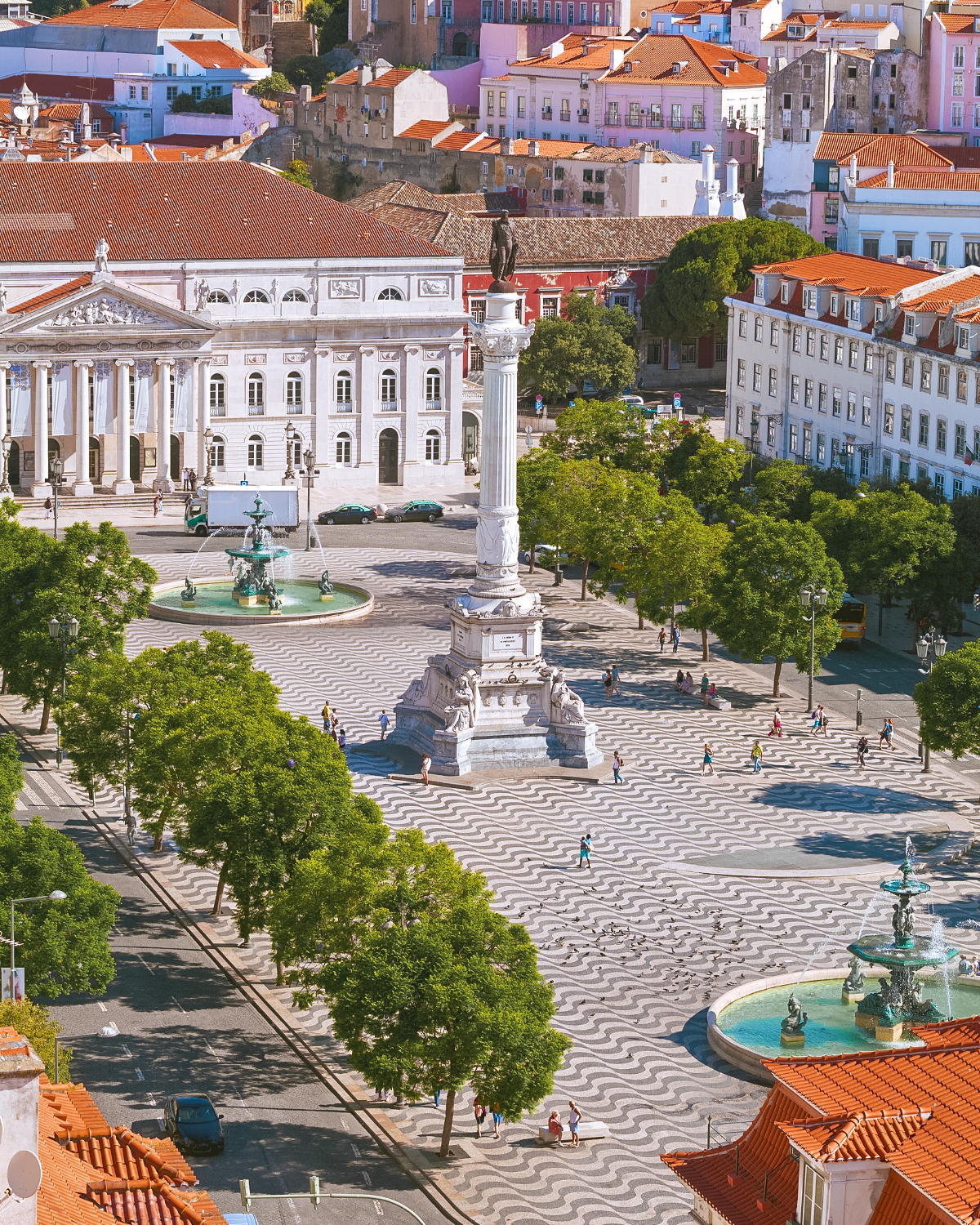
Although officially named King Pedro IV Square, everyone knows it as Rossio. The square is named after Pedro IV, who reigned as King of Portugal from 1826 to 1834 and as Emperor of Brazil from 1822 to 1831. Locals and tourists alike frequently gather here, and the square hosts a number of important landmarks, including the Column of Pedro IV, the Dona Maria II National Theatre, and the Rossio Railway Station. Rossio buzzes with activity and remains a lively and vibrant square, making it a great place to people-watch, relax, or simply enjoy the hustle and bustle of Lisbon.
Elevador de Santa Justa

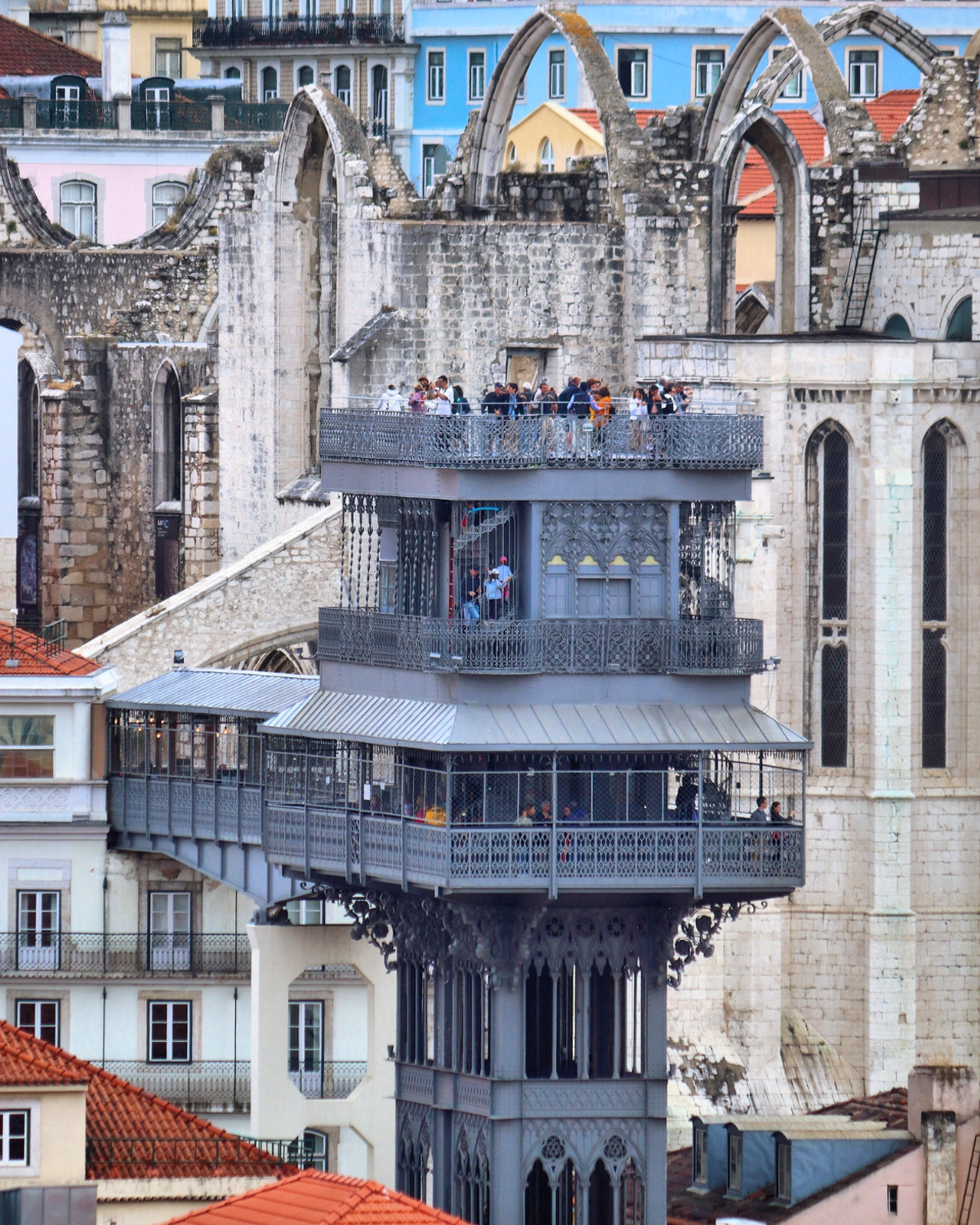
The Elevador de Santa Justa (Santa Justa Lift) is not just a means of transportation but also a historical and cultural landmark that offers stunning views of Lisbon. The lift was designed by Raoul Mesnier du Ponsard, a Portuguese engineer and student of Gustave Eiffel, who designed the Eiffel Tower. The iron structure features neo-Gothic design and connects the lower streets of Baixa with the higher Carmo Square, allowing you to avoid a steep climb. Builders completed the elevator in 1902, initially using steam power but later converting it to electric power.
The Elevador de Santa Justa is open every day from 7:30am – 11pm (9pm in the winter). The ride is free if you have a Lisboa Card or a 24-hour public transportation ticket, which can be purchased from any metro station for around €7. You can also purchase a roundtrip ticket (to ride up and down) for €5.30, which includes entry to the viewing platform. Please note that the 24-hour public transportation ticket does not include that, which is an additional €1.50 fee.
Tram 28

The Tram 28 is a classic Lisbon attraction, and a ride on it will take you past many of the city’s most iconic sights. To avoid getting on a super crowded tram, start your adventure at the first stop at Martim Moniz Square. Tickets are €3 for a single trip, and may be purchased from the driver. If you’re going to hop on and off often, it’s better to buy a 24-hour pass called the “Viva Viagem” for €6.45, or use the Lisboa Card. First ride departs at 6am and the last departure is at 11pm (10:30pm on weekends).
I hope you will enjoy your time in Lisbon and make the most of your visit!


